Dangerous Trees: Identification Guide
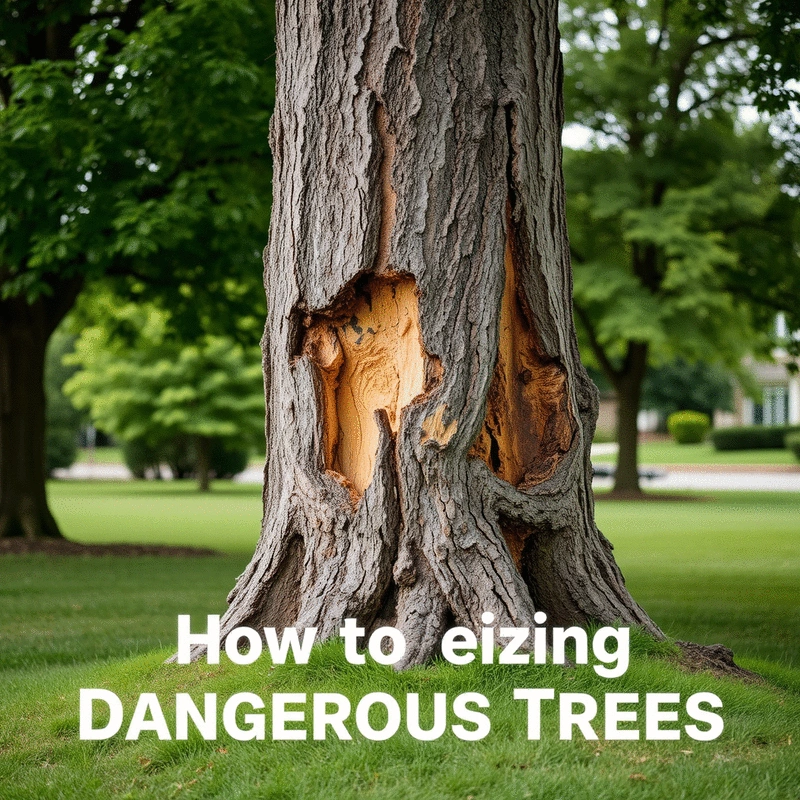
Have you ever considered how something as seemingly benign as a tree can quickly become a danger? Each year, countless homeowners face the repercussions of hazardous trees, from costly repairs to personal injuries. Understanding how to identify these risks can help you create a safer environment for your family and property.
What You Will Learn
- Recognizing Risks: Understand how hazardous trees can cause injuries, property damage, and power outages.
- Identifying Dangerous Species: Learn about tree species that are more prone to structural defects, such as oak and black walnut trees.
- Spotting Warning Signs: Discover visual cues like dead branches and leaning trees that indicate potential hazards.
- Evaluating Structural Defects: Identify cracks, weak unions, and decay signs to assess tree safety effectively.
- Preventive Measures: Adopt best practices for pruning and maintenance to ensure tree health and safety.
- When to Remove Trees: Recognize signs that indicate a tree may need removal, such as severe damage or infection.
- Engaging Professionals: Understand the importance of hiring reputable tree removal services when dealing with hazardous trees.
- Economic Benefits: Learn how proper tree management can save money on repairs and potentially lower insurance rates.
Key Risks of Hazardous Trees
Understanding the threats posed by hazardous trees can help in making informed decisions for property safety. You can also explore long-term tree risk management tips to further protect your property.
Injury to People
Falling branches or trees can cause serious injuries to anyone nearby.
Property Damage
Trees that fall can crush cars, roofs, and other structures, resulting in costly repairs.
Power Outages
Damaged trees can knock down power lines, causing outages and safety hazards.
Understanding the Importance of Identifying Dangerous Trees on Your Property
As a homeowner, it’s crucial to understand the significance of identifying dangerous trees on your property. Trees that pose risks can lead to severe injuries, significant property damage, and even costly repairs. By recognizing these risks early, you can create a safer outdoor environment for your family and neighbors!
Have you ever thought about how a fallen tree could affect your home? Each year, thousands of people face property damages due to hazardous trees. Staying proactive about tree safety can give you peace of mind and help you avoid potential disasters.
Recognizing the Risks of Hazardous Trees
It's essential to recognize the various risks associated with hazardous trees. The dangers include:
- Injury to People: Falling branches or trees can cause serious injuries to anyone nearby.
- Property Damage: Trees that fall can crush cars, roofs, and other structures, resulting in costly repairs.
- Power Outages: Damaged trees can knock down power lines, causing outages and safety hazards.
Understanding these risks helps you make informed decisions about tree care and maintenance. As I often emphasize at Safe Canopy Care, being prepared is key to safeguarding your home! For more detailed guidance, consider reviewing these tree safety risk prevention tips.
Common Types of Dangerous Trees
Some tree species are more prone to structural defects and risks than others. Here are a few commonly hazardous trees to watch out for:
- Oak Trees: While beautiful, they can develop large branches that may become weak and hazardous.
- Black Walnut Trees: These trees can have brittle wood and are often susceptible to decay.
- Eucalyptus Trees: Known for their fast growth, they can become unstable and have shallow root systems.
Being aware of these species can help you identify potential hazards before they escalate. If you find any of these trees on your property, consider assessing them further for safety!
Invasive Species and Their Impact on Tree Safety
Invasive species can significantly compromise tree health and safety. For instance, trees like the Tree of Heaven and Black Locust tend to outcompete native species, weakening the ecosystem. They can increase the risk of tree disease and instability, making them a danger to your property.
Invasive species often lack natural predators, allowing them to thrive and potentially damage the surrounding environment. By keeping an eye on these species, you can help maintain a healthier landscape and reduce risks associated with hazardous trees.
Identifying Warning Signs of Hazardous Trees
Now that we’ve discussed the importance of identifying dangerous trees, let’s dive into how to spot them! Knowing the warning signs can save you time and money while keeping your property safe.
Regular inspections are key. Look for visual cues, such as:
- Dead branches: These can indicate overall tree health issues.
- Leaning trees: If a tree is leaning, it may be at risk of falling.
- Overall tree vitality: Lack of leaves or unusual growth can signify a problem.
Taking the time to observe these signs can make all the difference! I always recommend a proactive approach to tree safety, which means staying vigilant about what’s happening in your yard.
Understanding Structural Defects: Cracks and Weak Unions
Identifying structural defects is essential for assessing tree safety. Here are specific defects that can indicate a tree may be hazardous:
- Cracks in the trunk: These can weaken the tree's overall integrity.
- Weak unions: Branches that grow too close together can create stress points.
- Decay signs: Fungal growth or soft spots may suggest internal decay.
These factors can lead to dangerous situations if not addressed. If you notice any structural issues, it’s best to consult with a certified arborist to evaluate the situation.
Evaluating Root Conditions and Soil Stability
Roots play a significant role in a tree’s stability. If you notice any of the following root conditions, it can indicate a risk:
- Exposed roots: These may indicate soil erosion or other stability issues.
- Root rot: This can compromise the tree’s ability to absorb water and nutrients.
- Poor soil conditions: Compacted or poorly drained soil can weaken tree stability.
By evaluating root conditions and soil stability, you can better understand the health of your trees. Regular assessments are vital for ensuring their safety!
Identifying Tree Diseases and Their Risks
Many tree diseases can influence the structural integrity of trees. Being aware of common diseases like:
- Oak wilt: This disease can quickly kill oak trees and spread to others.
- Anthracnose: This fungal disease can severely weaken trees and make them more susceptible to other issues.
- Root rot: Often caused by overwatering, this can lead to tree decline.
By identifying these diseases early, you can take steps to mitigate their effects and keep your trees healthy! Remember, proactive tree care is essential for maintaining a safe environment.
Pro Tip
Did you know? Conducting a seasonal tree health check can be an effective way to stay ahead of potential hazards. Make it a routine to assess your trees during spring and fall. Look for signs of disease, structural issues, or changes in soil stability. This proactive approach not only helps in early detection but also ensures that your trees remain a safe and beautiful part of your property!
Frequently Asked Questions About Hazardous Trees
Here are some common questions about identifying and managing hazardous trees:
- Q: What are the main risks associated with hazardous trees?
- A: Hazardous trees can cause serious injuries to people from falling branches or trees, significant property damage to cars, roofs, and other structures, and power outages if they fall on power lines.
- Q: Which tree species are commonly considered dangerous?
- A: Some commonly hazardous tree species include Oak Trees (due to large, weak branches), Black Walnut Trees (brittle wood, susceptible to decay), and Eucalyptus Trees (fast growth, unstable, shallow root systems).
- Q: What visual cues indicate a tree might be hazardous?
- A: Warning signs include dead branches, leaning trees, lack of leaves, unusual growth, cracks in the trunk, weak branch unions, and signs of decay like fungal growth or soft spots.
- Q: How do invasive species affect tree safety?
- A: Invasive species like the Tree of Heaven and Black Locust can outcompete native species, weaken the ecosystem, and increase the risk of tree disease and instability, making them a danger to your property.
- Q: When should I consider removing a tree?
- A: Consider tree removal if there is severe damage (cracks, excessive leaning, uprooted roots), untreatable infection, interference with structures or power lines, or if the tree is completely dead.
- Q: Why is it important to hire professional tree removal services?
- A: Professionals have the expertise and equipment to safely assess risks and remove hazardous trees, ensuring the job is done correctly and preventing further damage or injury.
- Q: What are the economic benefits of proper tree management?
- A: Proper tree management can save money on emergency repairs, potentially lower property insurance rates, and increase property value and curb appeal.
Implementing Preventive Measures for Tree Safety
When it comes to keeping your property safe from potential tree hazards, taking proactive steps is essential. At Safe Canopy Care, we believe that proper tree maintenance can prevent many issues before they escalate. By focusing on best practices for pruning and care, we can ensure our trees contribute positively to our environment and our safety!
Best Practices for Pruning and Maintenance
Regular pruning is critical for maintaining tree health and safety. Here are some effective tips to keep in mind:
- Remove Dead or Diseased Branches: Cut away branches that are dead or show signs of disease to prevent further spreading and to enhance the tree's structure.
- Thin Crowns: Thinning out dense tree canopies allows for better air circulation and sunlight penetration, which can improve overall health.
- Maintain Proper Height: Regularly assess and prune trees near structures or power lines to minimize hazards.
- Check for Weak Branch Unions: Regularly inspecting branches that are attached at narrow angles can prevent breakage during storms.
By following these tips, you can help your trees thrive and reduce risks on your property. Remember, a well-maintained tree is a safer tree!
When to Consider Tree Removal
Sometimes, despite our best efforts, a tree may become too hazardous to keep. Here are some signs that it might be time to consider removal:
- Severe Damage: Look out for trees that are severely cracked, leaning excessively, or have uprooted roots.
- Infection: If a tree is infected with a disease that cannot be treated, removal may be necessary to protect surrounding trees.
- Interference with Structures: Trees that are too close to your home or power lines can pose significant risks, especially during storms.
- Dead Trees: A tree that is completely dead can become a danger during windy conditions.
Timely action can save you from costly damage or personal injury. If you notice any of these signs, it’s wise to consult a professional. For more information, read about hazardous tree removal best practices.
Tree Removal Services: When and How to Engage
Engaging professional tree removal services is essential when you encounter hazardous trees. Here’s what to consider when you find yourself in this situation:
- Assess the Risks: Determine the potential risks associated with the tree and the impact of its removal.
- Choose a Reputable Service: Look for tree care companies with good reviews and certifications, like Safe Canopy Care, to ensure safety and expertise.
- Understand the Process: Ask about the steps involved in tree removal, including cleanup and stump removal options.
- Get an Estimate: Always request a detailed estimate before engaging services to understand the costs involved.
Remember, hiring an expert means ensuring the job is done safely and properly. At Safe Canopy Care, we are here to guide you through every step!
Understanding the Economic Impact of Tree Management
Managing trees isn't just about aesthetics—it also makes financial sense. Regular maintenance can save you money in the long run. Let's compare the costs:
- Preventive Care Costs: Regular pruning and health checks can be significantly lower than the costs of emergency tree removal and repairs after a storm.
- Insurance Savings: Proper tree maintenance might lower your property insurance rates by reducing the risk of damage.
- Property Value Increase: Healthy trees can boost your property value and curb appeal, making it a worthwhile investment!
Investing in tree care is not just about today; it’s about securing your property and your peace of mind for the future. You can also learn more about using a tree service directory to find qualified professionals.
Case Studies: Successful Hazard Tree Management
Let’s look at some real-life examples that showcase effective hazard management:
- Case 1: A homeowner noticed a leaning oak tree close to their house. After consulting with Safe Canopy Care, they decided to remove the tree. This proactive measure saved them from potential damage during a storm.
- Case 2: In another instance, a community recognized the threat of invasive species in their park. They worked with arborists to remove these trees and replace them with healthier, native species, enhancing safety and biodiversity.
These examples remind us of the importance of taking action before a problem arises. Together, we can create a safer environment, one tree at a time!
Conclusion and Next Steps for Property Owners
As we wrap up, I encourage you to take a moment and reflect on your own property. Are your trees healthy? Do they pose any risks? Engaging with experts like Safe Canopy Care can provide valuable insights tailored to your needs.
Taking Action: Engaging with Experts and Resources
Don’t hesitate to reach out for professional help when it comes to tree safety. Here are some resources to consider:
- Local arborists for tree assessments.
- Online tools to help identify tree species and potential hazards.
- Community workshops on tree care and maintenance.
Staying informed and proactive can save you a lot of trouble in the long run.
Continuing Education on Tree Health and Safety
Lastly, I encourage you to explore additional learning opportunities. Workshops, webinars, and local resources can greatly enhance your understanding of tree health. Here are a few suggestions:
- Attend local seminars on storm preparedness and tree care.
- Read books on urban forestry and tree management.
- Join online forums or social media groups focused on tree safety.
By investing in your knowledge, you’ll be better equipped to make informed decisions about your trees. Let’s work together to create safer spaces for our families and communities!
Recap of Key Points
Here is a quick recap of the important points discussed in the article:
- Identify Dangerous Trees: Recognizing hazardous trees can prevent injuries and property damage.
- Common Risks: Be aware of risks such as injury from falling branches, property damage, and power outages caused by damaged trees.
- Watch for Warning Signs: Regular inspections for dead branches, leaning trees, and overall vitality can help identify potential hazards.
- Structural Defects: Look for cracks, weak unions, and decay signs to assess tree safety.
- Invasive Species Impact: Monitor invasive species as they can threaten native trees and overall ecosystem health.
- Pruning Best Practices: Regularly prune dead or diseased branches, thin crowns, and maintain proper height to ensure tree health.
- Consider Removal When Necessary: Signs such as severe damage, infection, or proximity to structures may indicate the need for tree removal.
- Engage Experts: Consult certified arborists for assessments and tree care guidance to enhance safety.
- Invest in Maintenance: Regular tree care can save money in the long run by preventing damage and potentially lowering insurance rates.
Popular Posts
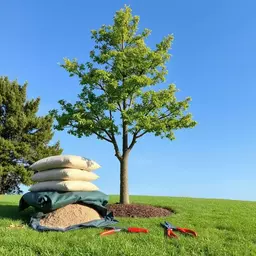 Storms can be unpredictable, but your response doesn’t have to be. By understanding storm prepared
Storms can be unpredictable, but your response doesn’t have to be. By understanding storm prepared
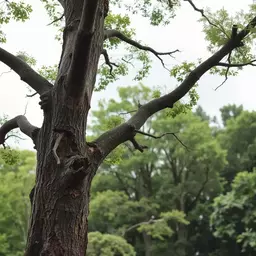 As storms can strike without warning, ensuring the safety of your trees is not just a precaution—i
As storms can strike without warning, ensuring the safety of your trees is not just a precaution—i
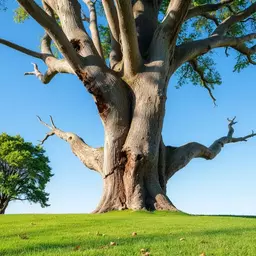 Have you ever considered how a single tree could be a ticking time bomb for your property? Understan
Have you ever considered how a single tree could be a ticking time bomb for your property? Understan
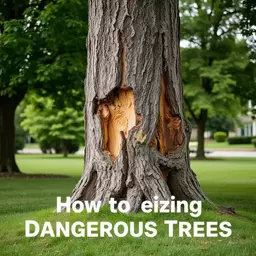 Have you ever considered how something as seemingly benign as a tree can quickly become a danger? Ea
Have you ever considered how something as seemingly benign as a tree can quickly become a danger? Ea
